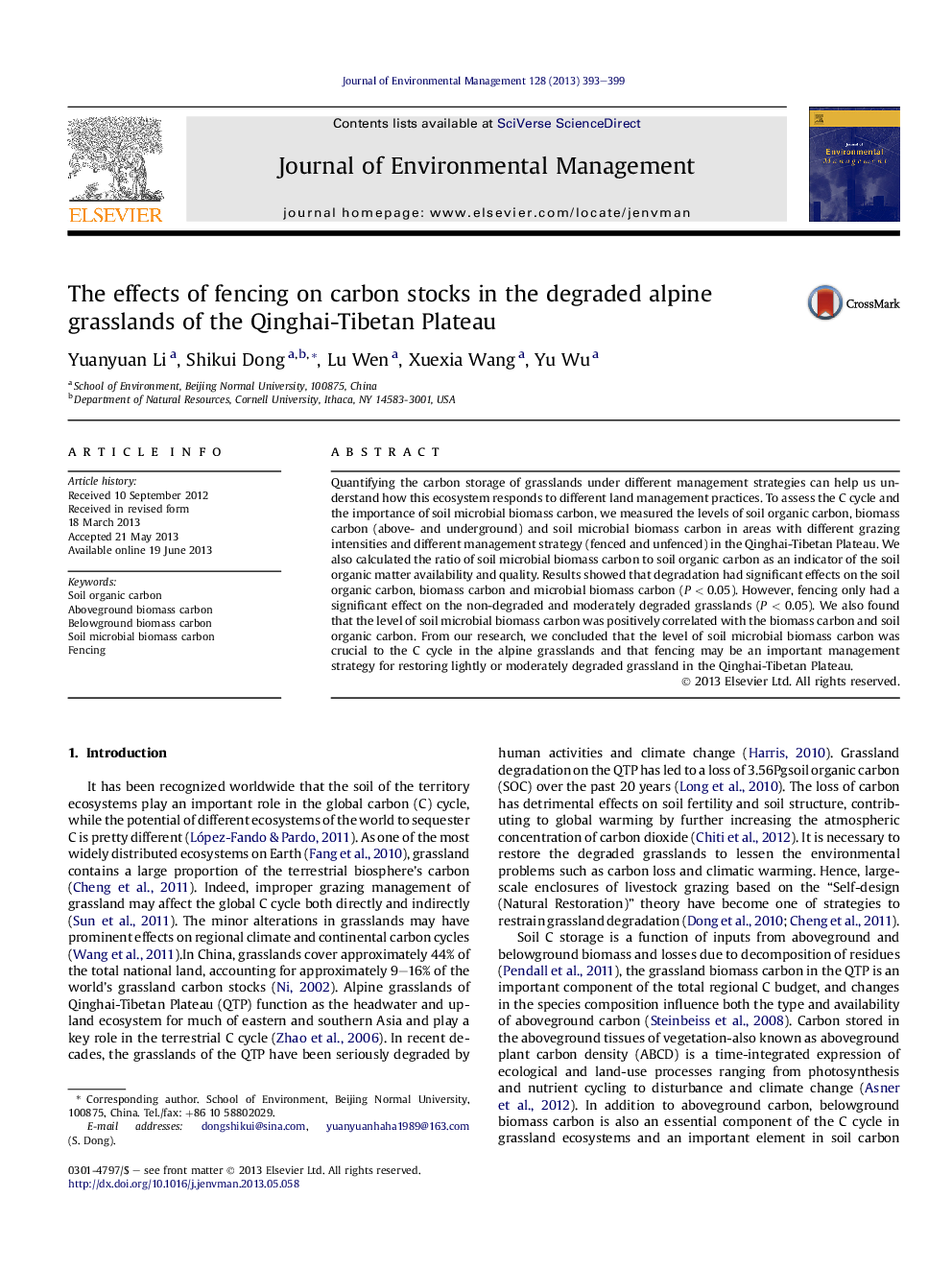| Article ID | Journal | Published Year | Pages | File Type |
|---|---|---|---|---|
| 7484378 | Journal of Environmental Management | 2013 | 7 Pages |
Abstract
Quantifying the carbon storage of grasslands under different management strategies can help us understand how this ecosystem responds to different land management practices. To assess the C cycle and the importance of soil microbial biomass carbon, we measured the levels of soil organic carbon, biomass carbon (above- and underground) and soil microbial biomass carbon in areas with different grazing intensities and different management strategy (fenced and unfenced) in the Qinghai-Tibetan Plateau. We also calculated the ratio of soil microbial biomass carbon to soil organic carbon as an indicator of the soil organic matter availability and quality. Results showed that degradation had significant effects on the soil organic carbon, biomass carbon and microbial biomass carbon (PÂ <Â 0.05). However, fencing only had a significant effect on the non-degraded and moderately degraded grasslands (PÂ <Â 0.05). We also found that the level of soil microbial biomass carbon was positively correlated with the biomass carbon and soil organic carbon. From our research, we concluded that the level of soil microbial biomass carbon was crucial to the C cycle in the alpine grasslands and that fencing may be an important management strategy for restoring lightly or moderately degraded grassland in the Qinghai-Tibetan Plateau.
Related Topics
Physical Sciences and Engineering
Energy
Renewable Energy, Sustainability and the Environment
Authors
Yuanyuan Li, Shikui Dong, Lu Wen, Xuexia Wang, Yu Wu,
